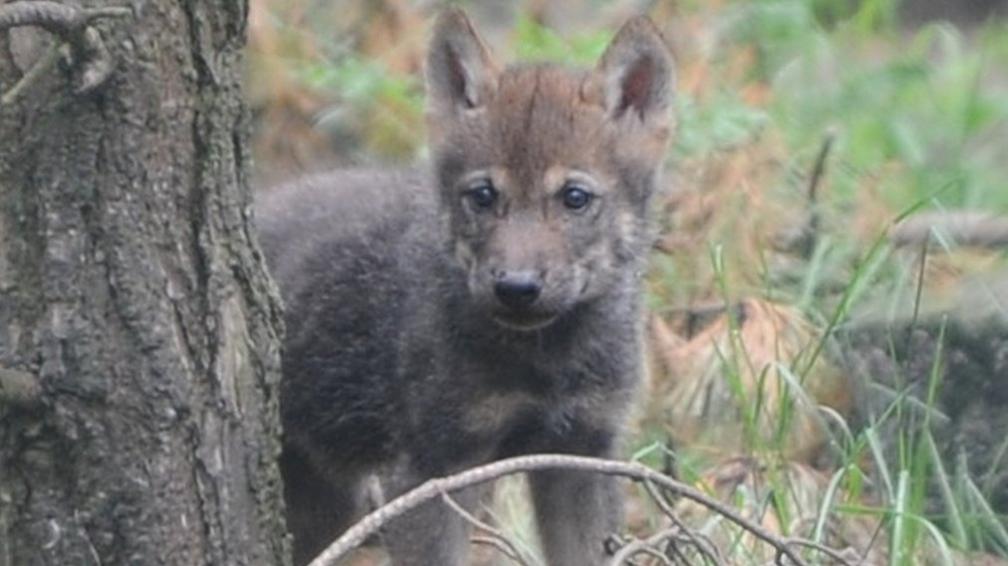'No ecological reason' against reintroducing wolves
- Published

Wolf ecotourism is growing in other parts of Europe, the John Muir Trust said
A landscape conservation charity has said there was "no ecological reason" why wolves could not be reintroduced to Scotland.
In the latest edition of its journal, the John Muir Trust (JMT) said the animal had been demonised in the UK.
It has raised the issue of bringing back the wolf as part of a wider discussion on "rewilding" the UK.
JMT said that over the next few months it hoped to stimulate debate on returning areas to more natural states.
In the John Muir Trust Journal, chief executive Stuart Brooks said the charity wanted to help develop a practical vision on rewilding.
Rewilding includes controlling grazing by domestic and wild animals so native trees and plants can flourish.
Mr Brooks also said: "We want to establish a more cohesive context for species reintroductions based on what is possible as well as desirable."
His comments accompany an article by the charity's communications chief Susan Wright and head of land and science Mike Daniels.
In the article, they said wolf ecotourism was growing in other parts of Europe, but also noted a cull of wolves in Sweden.
They said: "There is no ecological reason why wolves couldn't come back - we have the climate, the habitat and the food.
"Many are afraid of the 'big bad wolf' even though they are far more likely to be harmed by their pet dogs, or indeed their horses, than by a wolf, if it were present."

In Scotland, wolves can only be seen in captivity
The wolf was hunted to extinction in Scotland in the 1700s with some of the last killed in Sutherland and Moray.
Today, European wolves can now only be seen in captivity, such as at the Highland Wildlife Park at Kincraig, near Aviemore.
However, wolves have continued to feature on a list of Scottish wildlife that people have concerns about in terms of conservation.
A small number of respondents to the latest Scottish Nature Omnibus Survey mentioned the mammal when asked what wildlife they were most worried about.
Deer, red squirrel and Scottish wildcat topped the list.
Commissioned by Scottish Natural Heritage, the survey is held on a regular basis to gauge public awareness of Scotland's natural world, and the efforts to protect and manage it.
Wolves have featured in the survey since 2011. Just 1% of respondents mentioned the predator in the latest survey.
However, people did rate it ahead of creatures that do inhabit Scotland and have conservation issues, such as puffins, voles, red kites and ptarmigan.
Wolf trap
Wolves were driven to extinction by persecution and hunting. Chieftains and royalty led some of the hunting parties.
One attended by Queen Mary in 1563 employed 2,000 Highlanders and ended in the deaths of five wolves and 360 deer.
Huge swathes of forest in Perthshire, Lochaber and Argyll were systematically destroyed to deprive wolves of their habitat.
The remains of a wolf trap have also been found at Moy, near Inverness, dating from between the 16th and 18th centuries.
Wolves were lured by bait onto a carefully weighted plank above a deep pit covered with brush wood.
Animals killed near Brora, in Sutherland, in 1700 and another at Findhorn, in Moray, in 1743 were among Scotland's last.
More recently there has been debate on the release wolves in Scotland, including into a large enclosed area at the Alladale Estate in Sutherland.
- Published11 December 2013

- Published28 October 2013

- Published5 July 2012

- Published7 October 2010